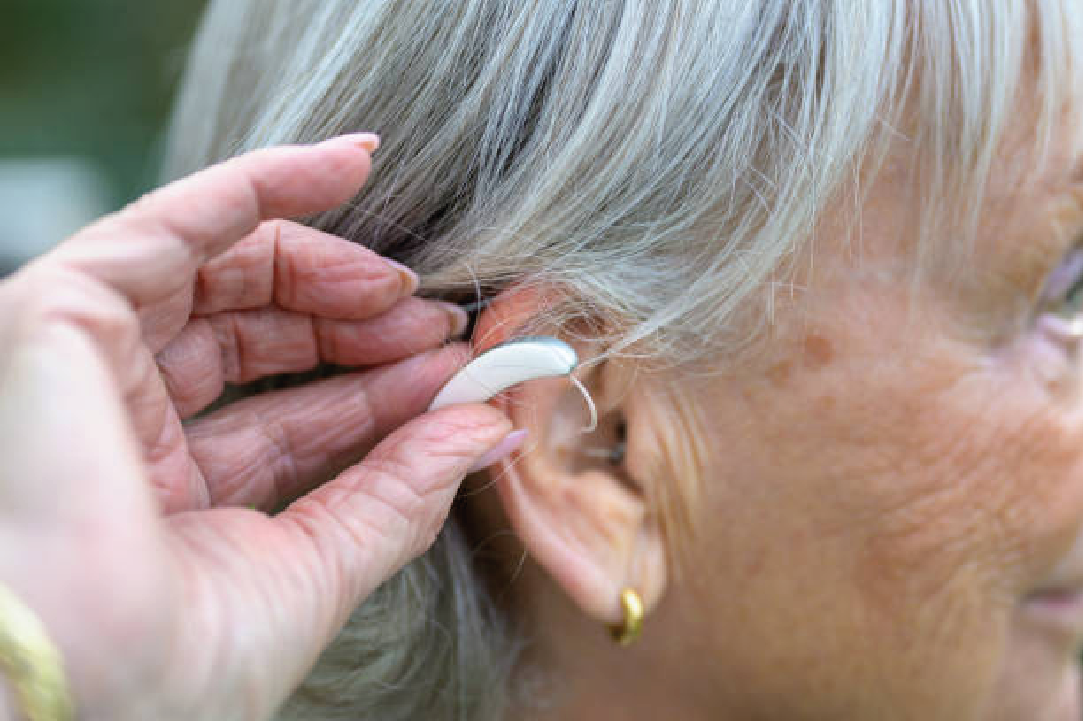Hearing loss is a common condition that affects millions of people worldwide. It can significantly impact a person's quality of life, making it difficult to communicate, enjoy social activities, and even affect their mental health. Fortunately, hearing aids have emerged as a revolutionary solution, helping individuals with hearing loss regain their auditory abilities and improve their overall well-being. While some may assume that one hearing aid is sufficient, there are numerous advantages to using a pair of hearing aids. In this article, we will explore why two hearing aids are better than one and how they can enhance the hearing experience for those in need.
Improved Sound Localization
One of the primary benefits of wearing two hearing aids is improved sound localization. Our ears work together to locate the source of sound accurately. With two hearing aids, individuals can more effectively determine the direction from which sounds originate. This ability is essential for everyday situations, such as identifying the location of a car approaching from behind or pinpointing the direction of someone speaking in a crowded room. By wearing a hearing aid in each ear, individuals can experience a more natural and immersive auditory perception, allowing them to engage more comfortably in various social settings.
Enhanced Speech Understanding
Hearing loss often affects speech comprehension, making it challenging to understand conversations, particularly in noisy environments. Two hearing aids can significantly improve speech understanding by providing a balanced sound input to both ears. With bilateral hearing aids, individuals can enjoy enhanced clarity and reduced listening effort when engaging in conversations, even amidst background noise. The combined effect of two hearing aids can lead to improved speech understanding and better overall communication skills, allowing individuals to participate actively in conversations and social interactions.
Balanced Hearing Experience
Using a single hearing aid may result in an imbalance in the hearing experience. When only one ear receives amplification, it can lead to auditory asymmetry, where sounds appear louder on one side. This imbalance not only affects the quality of sound perception but can also cause discomfort and difficulties in adapting to the amplification. By wearing two hearing aids, individuals can achieve a balanced hearing experience, ensuring that both ears receive equal amplification. This balance not only improves the overall sound quality but also helps in maintaining the brain's natural processing of sound, contributing to a more comfortable and satisfying listening experience.
Preservation of Auditory Abilities
Hearing loss is often bilateral, meaning it affects both ears. Even if the hearing loss is more severe in one ear, it is essential to provide appropriate stimulation to both ears to prevent further deterioration of auditory abilities. When only one hearing aid is used, the unaided ear may undergo a phenomenon known as "auditory deprivation," where the lack of stimulation can lead to a decline in hearing abilities over time. Wearing two hearing aids ensures that both ears receive the necessary stimulation, helping to maintain the overall auditory health and potentially preserving the remaining hearing abilities.
Personalized Listening Experience
Modern hearing aids come with advanced technologies and features that can be customized to an individual's specific needs. When using a pair of hearing aids, these features can be optimized and synchronized between the devices to provide a personalized listening experience. For example, wireless connectivity allows the hearing aids to communicate with each other, adjusting settings automatically to adapt to different environments. This synchronization enables a seamless transition between listening environments, whether it's switching from a quiet room to a noisy restaurant or connecting to other devices for enhanced audio streaming. The use of two hearing aids maximizes the potential of these advanced features, providing users with a tailored and immersive hearing experience.
In conclusion, while a single hearing aid can undoubtedly offer significant benefits to individuals with hearing loss, the advantages of wearing two hearing aids are clear. Improved sound localization, enhanced speech understanding, balanced hearing experience, preservation of auditory abilities, and a personalized listening experience are among the key reasons
Improved Sound Localization
One of the primary benefits of wearing two hearing aids is improved sound localization. Our ears work together to locate the source of sound accurately. With two hearing aids, individuals can more effectively determine the direction from which sounds originate. This ability is essential for everyday situations, such as identifying the location of a car approaching from behind or pinpointing the direction of someone speaking in a crowded room. By wearing a hearing aid in each ear, individuals can experience a more natural and immersive auditory perception, allowing them to engage more comfortably in various social settings.
Enhanced Speech Understanding
Hearing loss often affects speech comprehension, making it challenging to understand conversations, particularly in noisy environments. Two hearing aids can significantly improve speech understanding by providing a balanced sound input to both ears. With bilateral hearing aids, individuals can enjoy enhanced clarity and reduced listening effort when engaging in conversations, even amidst background noise. The combined effect of two hearing aids can lead to improved speech understanding and better overall communication skills, allowing individuals to participate actively in conversations and social interactions.
Balanced Hearing Experience
Using a single hearing aid may result in an imbalance in the hearing experience. When only one ear receives amplification, it can lead to auditory asymmetry, where sounds appear louder on one side. This imbalance not only affects the quality of sound perception but can also cause discomfort and difficulties in adapting to the amplification. By wearing two hearing aids, individuals can achieve a balanced hearing experience, ensuring that both ears receive equal amplification. This balance not only improves the overall sound quality but also helps in maintaining the brain's natural processing of sound, contributing to a more comfortable and satisfying listening experience.
Preservation of Auditory Abilities
Hearing loss is often bilateral, meaning it affects both ears. Even if the hearing loss is more severe in one ear, it is essential to provide appropriate stimulation to both ears to prevent further deterioration of auditory abilities. When only one hearing aid is used, the unaided ear may undergo a phenomenon known as "auditory deprivation," where the lack of stimulation can lead to a decline in hearing abilities over time. Wearing two hearing aids ensures that both ears receive the necessary stimulation, helping to maintain the overall auditory health and potentially preserving the remaining hearing abilities.
Personalized Listening Experience
Modern hearing aids come with advanced technologies and features that can be customized to an individual's specific needs. When using a pair of hearing aids, these features can be optimized and synchronized between the devices to provide a personalized listening experience. For example, wireless connectivity allows the hearing aids to communicate with each other, adjusting settings automatically to adapt to different environments. This synchronization enables a seamless transition between listening environments, whether it's switching from a quiet room to a noisy restaurant or connecting to other devices for enhanced audio streaming. The use of two hearing aids maximizes the potential of these advanced features, providing users with a tailored and immersive hearing experience.
In conclusion, while a single hearing aid can undoubtedly offer significant benefits to individuals with hearing loss, the advantages of wearing two hearing aids are clear. Improved sound localization, enhanced speech understanding, balanced hearing experience, preservation of auditory abilities, and a personalized listening experience are among the key reasons




Leave a comment
This site is protected by hCaptcha and the hCaptcha Privacy Policy and Terms of Service apply.